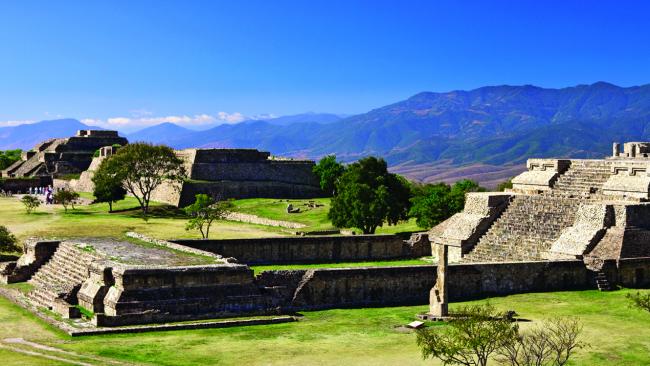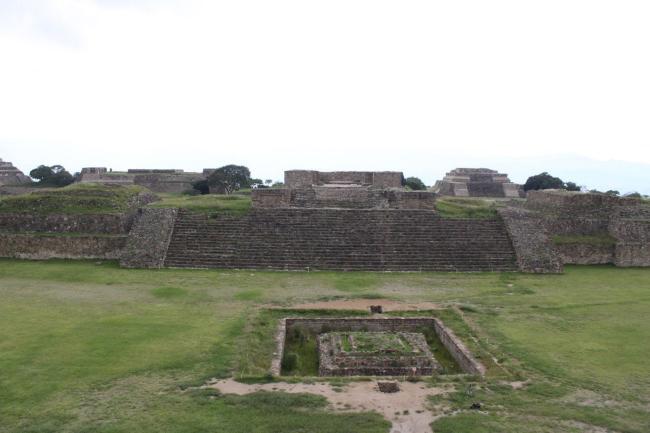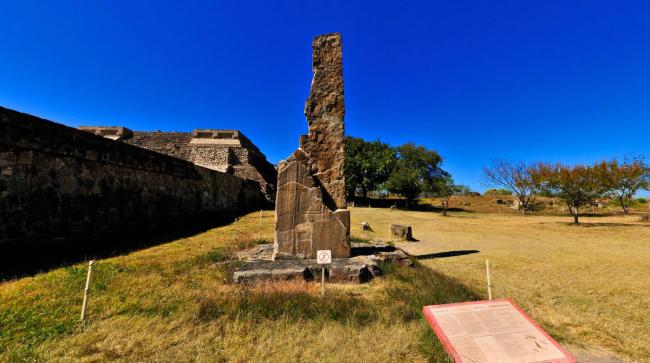
Plataforma Sur
Estructura
It is a very large structure that closes the plaza. It is conformed by two bodies and from the superior part the great ceremonial square can be observed integrally. In the lower part and in the corners are embedded several stelae with reliefs of zoomorphic figures. It is the highest construction of the city, with 40 m of height. It has an almost quadrangular plan of approximately 140 m per side. Built during the heyday of Monte Alban, in its lower part there are some stelae with glyphs of the pre-Columbian Zapotec writing, one of the first to appear in Mesoamerica. In the upper part of the platform, where the visiting public can access by a stairway from the north side of the construction, there are two small mounds that fulfilled ceremonial functions. The large plaza became a market space, where merchants from the surrounding regions, or even from farther away, congregated in Monte Albán. All kinds of products were traded here, such as plants, foodstuffs and objects destined for veneration.
Adoratory: Related to Building P to the east and the set of Buildings G, H and I to the west, the Central Adoratory was a very important space for the Zapotecs in the celebration of the beginning of the rainy season. The shrine functioned as a rainwater reservoir and underwent several modifications throughout the development of the city, as two stages of construction are clearly visible. The first is connected with two tunnels or drains on its east and west sides, which are linked to higher levels of Building II to the east, and Building H to the west. The second is the cistern we see today, whose center has an altar where offerings were placed.
Stela 18: It dates from the Classic period and is considered an astronomical instrument similar to those found in other civilizations. Its most evident function is to reflect, by means of the position of its shadow, the moment when the sun is at noon. Made of sandstone, it is 5.20 m high and is arranged in such a way that, along both sides, it indicates with great precision the direction of the astronomical north. It also has some calendrical glyphs. It was discovered by Alfonso Caso during the seventh and eighth seasons of explorations in Monte Alban, between 1937 and 1939.




